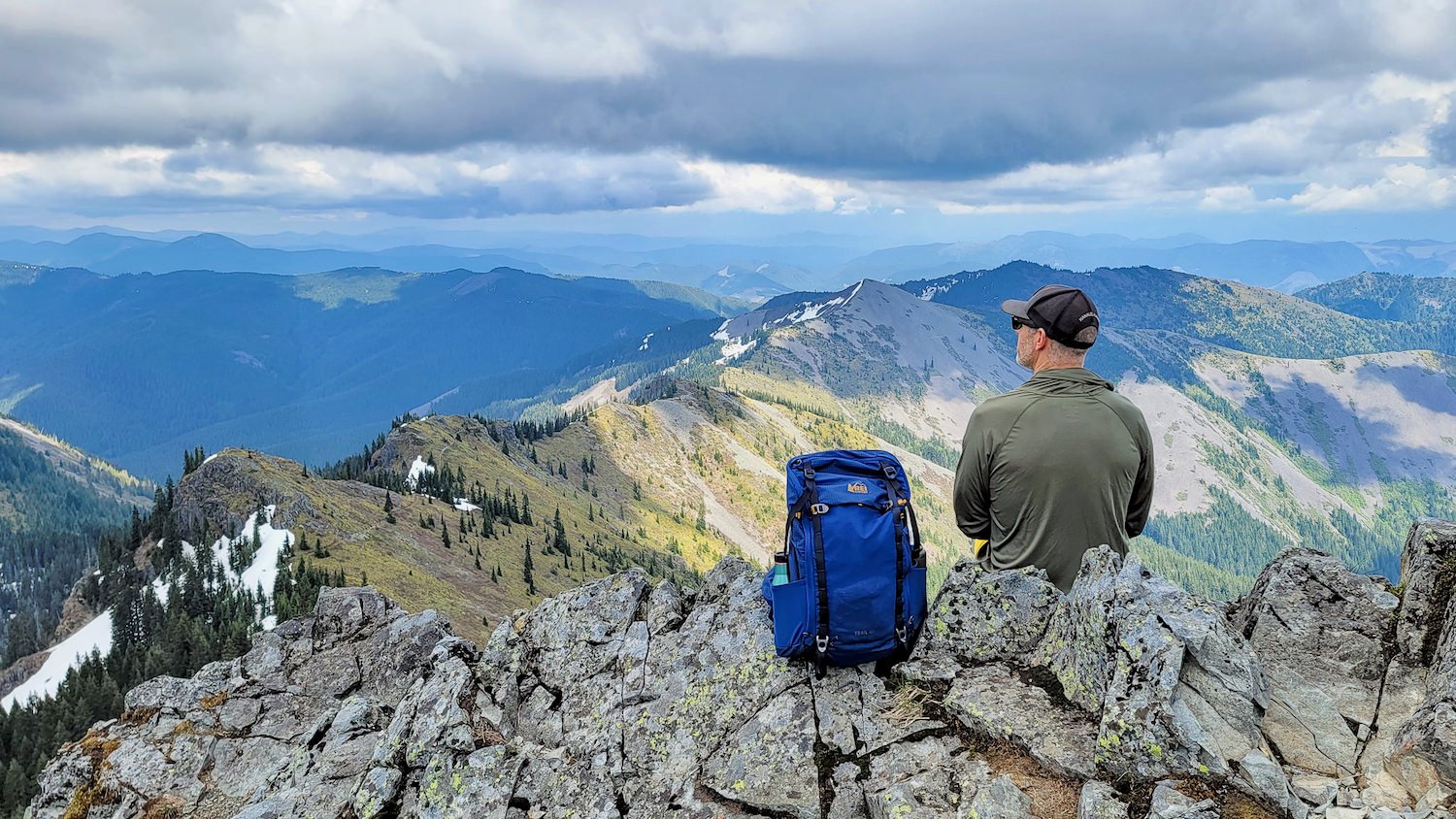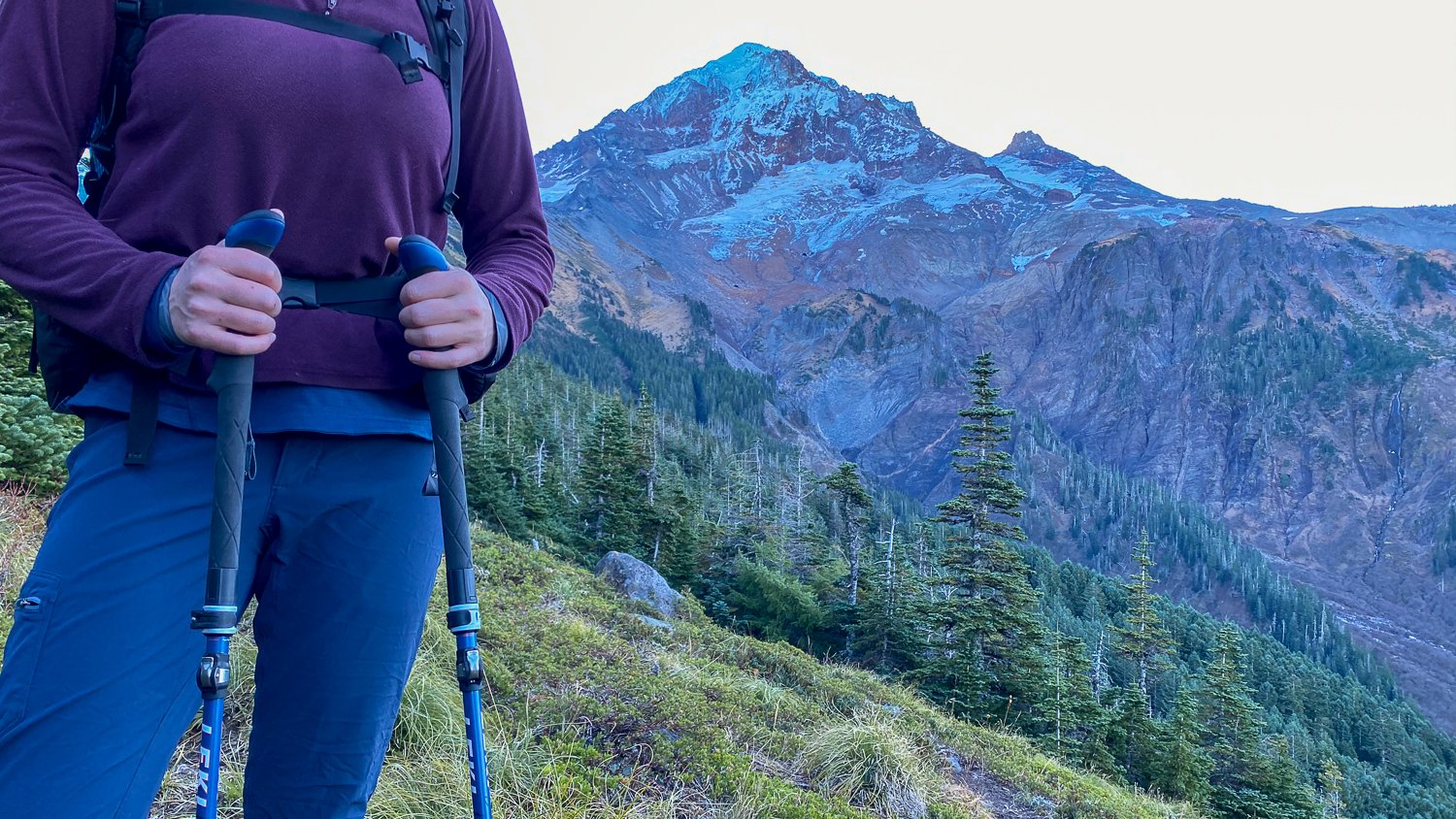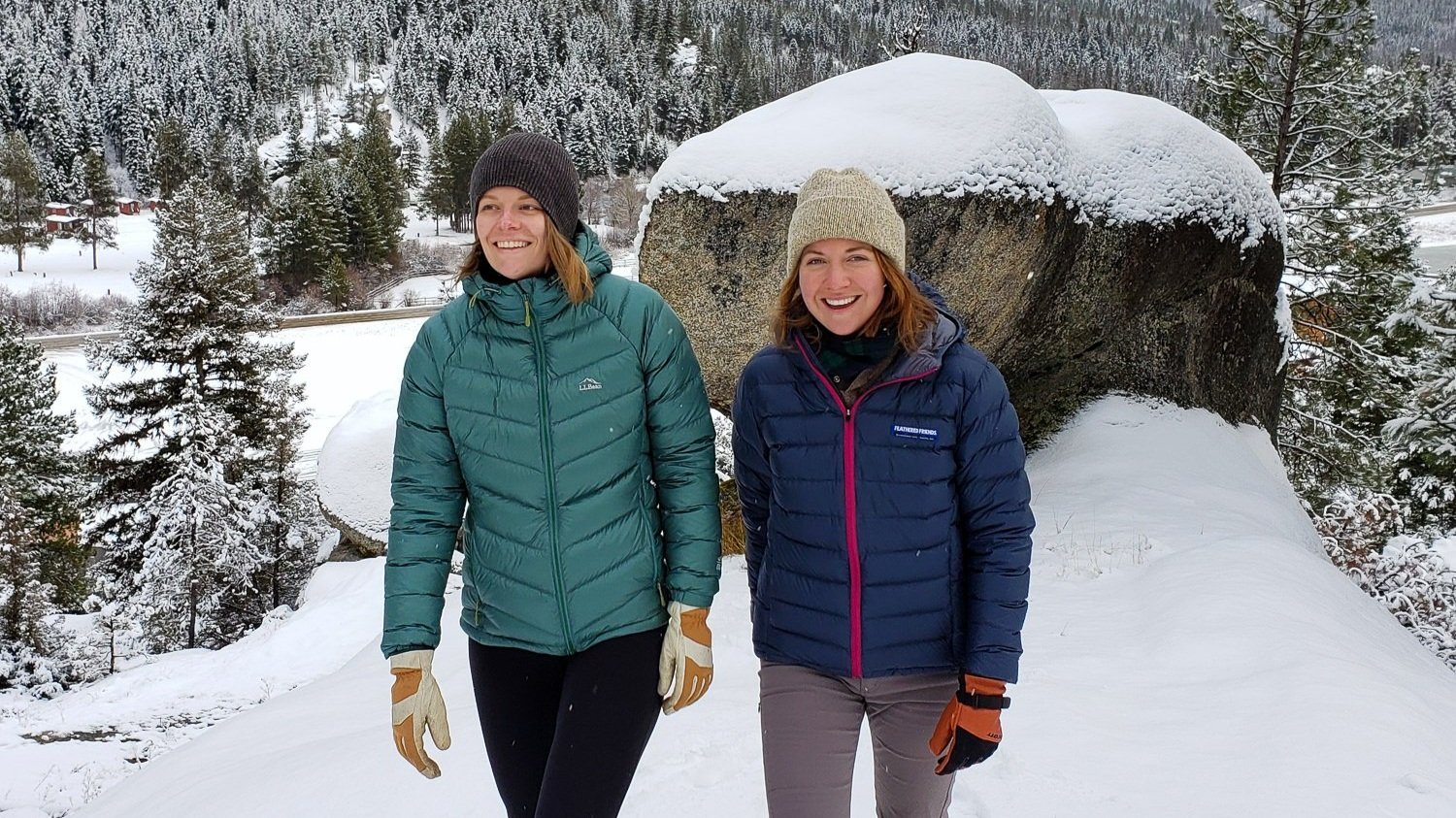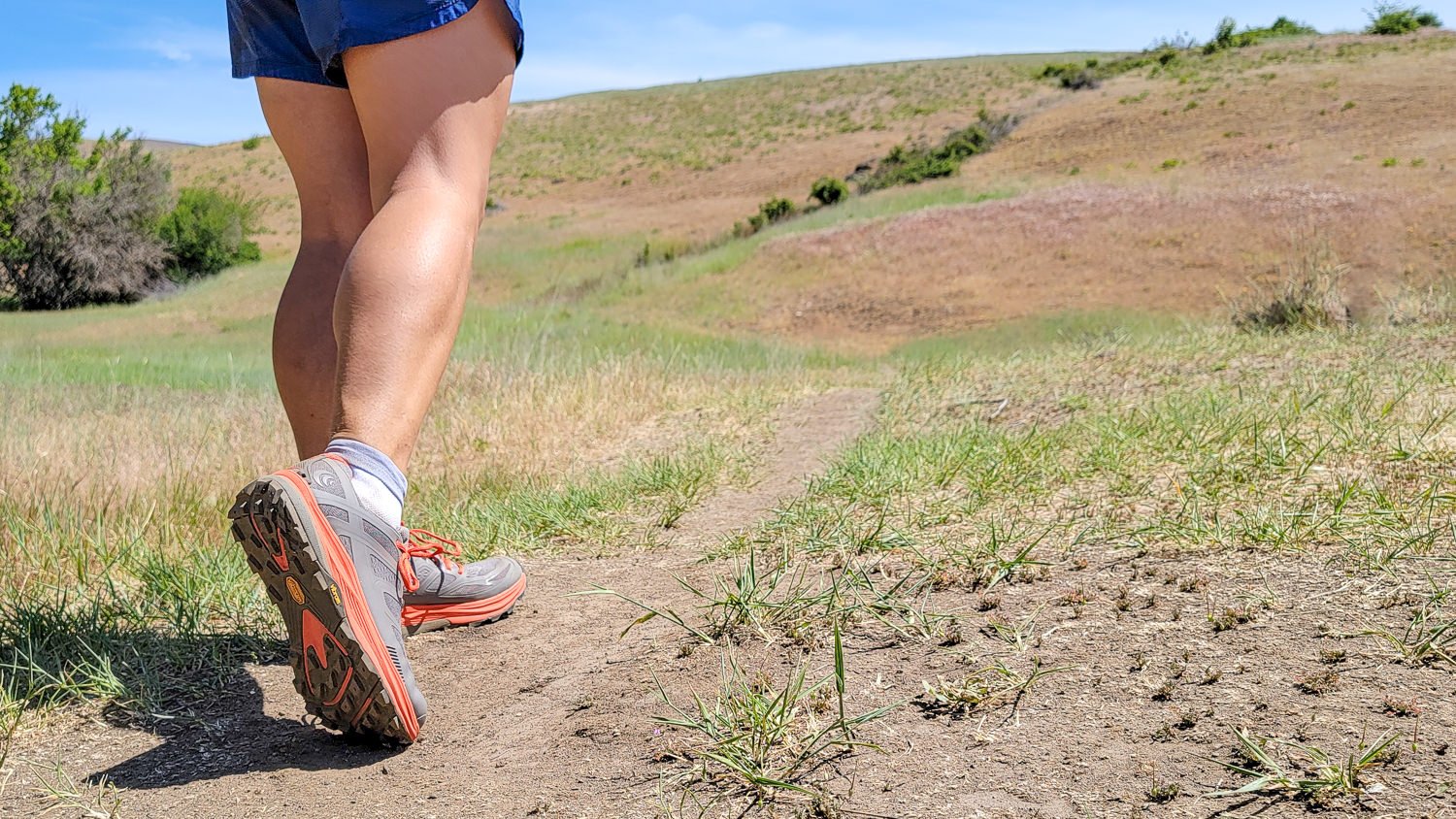
Photo Credit: Heather Eldridge (Cleverhiker.com)
CleverHiker Tutorials
Our team of outdoor experts have created a collection of tutorial guides to help you level up your outdoor skills. Whether you're a seasoned pro or just starting out, our videos and articles will make your next adventure safer and more enjoyable.
For more popular CleverHiker resources, check out the following:
Lightweight Backpacking Video Series
Your shelter will be one of the most important pieces of gear you bring on your backcountry trips for both safety and comfort.
Choosing an ultralight backpack will be a significant weight-saving choice for your backcountry trips, but you shouldn't expect to jam it full of heavy gear.
Your sleeping system is very important for safety on the trail and it'll also have a huge influence on your enjoyment.
When you're ultralight backpacking, you’ll want to cut down on equipment as much as possible, but you never want to do that at the expense of safety.
Eating a warm meal after a big hike can be one of the best parts of your day, and with an ultralight stove, you can keep your pack nice and light while you hike too.
The trail food you bring will greatly depend on your personal preferences, the nutritional value of the food, how heavy/bulky it is, and how hard it will be to cook.
When it comes to saving energy on the trail, choosing lightweight footwear is just about the most important decision you can make.
A well-thought-out clothing system will keep you covered under almost any weather conditions and can be extremely lightweight too.
Water is one of the most important items you’ll carry to keep yourself hydrated and safe on the trail, but it will also be one of the heaviest items in your pack.
Essential Trail Skills Video Series
Learning to practice leave-no-trace backpacking is one of the most important skills any backpacker can learn.
Having an awesome adventure in the wilderness starts well before you step onto the trail.
If you’re uncomfortable while you hike, you probably won’t enjoy backpacking very much and you certainly won’t be excited for your next trip.
How you pack your backpack on a daily basis is very important for efficiency and enjoyment on the trail.
Choosing great campsites will lead to incredibly memorable trips, but it’s not as simple as just throwing a tent down on a flat piece of dirt.
Complications can arise even on the simplest of backcountry trips, so it always pays to be prepared.
No matter how simple your route may be, understanding how to use basic navigation equipment is a crucial skill for any backpacker.
Storing your food properly at night is not just a skill that’s good for you, it’s also good for the wildlife around you.
If you’re properly prepared and cultivate a positive attitude, backpacking in the rain can be a lot of fun.
Having a campfire while backpacking can be a lot of fun, but it can also be the type of skill that can save your life in an emergency.
You’ll hopefully never have to use them, but emergency first aid skills can literally save your life, so don’t overlook them.
Hiking above treeline will give you fantastic sweeping views, but you’ll also be much more exposed.
Bears are the animals we want to see the most while we’re backpacking, but they’re also the animals that we’re most afraid of.
In this episode we’ll take a look at the real danger snakes and cougars present on the trail.
River crossings are one the most dangerous parts of backcountry trips. Learn the skills that will get you and your group safely across.
Snowfield crossings are common on winter and early spring trips. This video will show you proper ice axe self-arrest techniques and teach you about the gear you’ll need.
This episode focuses on the most important and commonly used knots that will be helpful on trips in the backcountry.
In the wilderness, your knife is a very important tool, and knowing how to use it properly is a key skill.
Ticks, mosquitoes, and poisonous plants are not just annoyances worth avoiding. They can also carry serious diseases that come with long-term health problems.
Keeping good trail hygiene is an important part of staying healthy and feeling good while you backpack.
Tutorials from Our Blog
Use our Ultimate Day Hiking Checklist every time you hit the trail to make rounding up your gear quick and easy.
Camping is a classic way to commune with nature and spend time with family and friends. It’s good for the body, mind, and spirit to mix up our routines and get outside for some fun and relaxation. But we know how daunting packing for multi-day camping trips can be. That’s why we put together this checklist to help make packing easy and stress-free.
After years of honing our backpacking gear to find the balance of weight, comfort, and preparedness, these are the items you’ll find in our backpacks. We put together this Ultimate Backpacking Checklist to help you organize your gear so you have everything you need - nothing more and nothing less.
Making your own backpacking meals can be fun and a great way to take control over your nutrition while saving money. Store-bought freeze-dried meals are convenient and lightweight, but they can be expensive and full of preservatives. Follow the steps below to learn the basics of food dehydration, then try some of our favorite recipes for inspiration.
Whether you're thru-hiking across the country or heading out on a quick weekend jaunt, trekking poles can add a lot of stability and comfort to your hike. Trekking poles shouldn't be considered essential, but many hikers and backpackers love them for a variety of reasons. In this article we’ll break down everything you need to know about hiking with poles.
If you’ve got your sights set on a difficult hike or an epic backpacking trip, it’s smart to prepare your body in the weeks and months leading up to it by doing some training. When you’re in tip-top shape, you can truly enjoy the experience instead of worrying about being sore and exhausted.
Human-caused wildfires impact millions of acres of forest each year. With a little extra prep, attentiveness, and care, we can all make a large impact on the future of our natural spaces. In this article we’ll outline how to safely enjoy a fire outdoors.
High-quality camping and backpacking tents can be expensive, but they’re well worth the cost if you use them for years of adventures. Here are a few tricks we’ve learned over the decades about properly maintaining, repairing, and storing tents to keep them in peak condition.
We love hiking with an ultralight kit because it allows us to spend less time worrying about aches and pains and more time enjoying side trails and the beautiful scenery around us. Whether you’re new to backpacking or you’re a traditional backpacker looking to lighten your load, we’ll break down everything you need to know about getting started with ultralight backpacking.
Most backpackers and hikers don’t wash their rain gear nearly enough, if ever. This leads to wetting out and hikers may even buy new rain gear because they think their old shells are worn out. Washing and retreating your rain jackets and pants is a surprisingly simple task.
Taking your dog for a rainy hike or a jaunt in the snow is incredibly fun and a great way to keep them active during the winter. But adventuring with your pup in cold, wet conditions comes with its own specific challenges. Here are a few tricks we’ve learned to keep our dogs comfortable, happy, and healthy on winter hikes.
We’re avid cooks both at home and on our adventures, and it’s taken decades to dial in this list of our favorite camping recipes. We love these meals because they have a great balance of being convenient to make outdoors and gourmet enough to satisfy our taste for luxury while on vacation.
A photo speaks a thousand words, especially when it comes to recalling the details of your adventures. A trip may only last for a few days, but great photos will bring back the feels for a lifetime. Learning to capture professional looking photos takes time, but it’s a skill worth growing if you want to better share your experiences, inspire others, and record your memories.
Following the tips in this guide will prepare you and your pooch for the trail and build confidence to take them on longer hikes and backpacking trips. After all, a long walk with their best friend is your dog’s dream come true.
Whether you’re day hiking to a favorite waterfall or bagging a difficult summit, carrying the proper equipment is absolutely critical. For first-timers and sage backcountry traveler alike, dialing in essential day hiking gear is an important part of any pre-trip preparations.
Washing a down sleeping bag is actually surprisingly simple. Don’t let your trusty down sleeping bag get ruined with grit and grime from the trail. Here’s a step-by-step guide on how to revitalize and refresh your sleep sack.
Winter camping is a unique experience that creates life-long memories. We love snowshoeing, building camps, and gathering with friends in our snow kitchens over steaming food and hot drinks. Winter camping might seem difficult at first, but it’s actually pretty simple and surprisingly comfortable with the right gear.
When you go into the backcountry during the harshest season of the year, it pays to have the right equipment to keep you safe, comfortable, and having fun. Whether you’re experienced, or you’ve never been winter camping before, working through a thorough checklist like the one below will give you peace of mind when preparing for an adventure. We hope it makes packing for your next winter camping trip quick and easy.
There’s no doubt that rainy and cold conditions add an element of challenge to getting outside. But, don’t let a drizzly forecast stop you from being active and immersing yourself in nature. The right mindset and quality rain gear make all the difference.
A quality sleeping bag may be one of the biggest backpacking investments you ever make. Your sleep sack will likely cost hundreds of dollars, but if you treat it with care, it’ll last for many years, possibly even decades. That said, nothing will ruin a quality sleeping bag faster than neglect.
One of the most common problems hikers and backpackers experience are blisters. They may be small, but they can easily be painful enough to end your trip. We put together this guide to help teach you how to prevent blisters entirely, to learn how to treat them, and to provide general foot care tips to keep your tootsies happy and healthy on the trail.
Hiking footwear is a really personal choice, and people often have differing opinions on what type of shoe works best for hiking. Here are some things to know that can help you decide which style will work best for you.
A lightweight down coat should be at the center of any good backpacking list. You’ll wear it just about every night on the trail. It’ll keep you toasty warm, even after spending hours jammed into the bottom of your pack. So, considering how essential your down coat is and how often you use it, let me ask you this; when was the last time you washed it?
Yeah… that’s what I thought.
For many of us, it’s been drilled into our heads since day one that backpackers wear boots. That’s just what you do. You need the toughness and the ankle support and the water protection, right? That’s why it blew my mind a few years back when I learned that thru-hikers cover thousands of trail miles every year in running shoes. Now, after many years and many miles, I feel very confident saying: Ditch the boots and don't look back.
As hikers, we expect a lot from our clothing. It has to insulate us from the cold, breathe well, dry quickly, and protect us from rain, snow, wind, and intense sun. We need to be able to deal with all types of changing conditions under variable temperature ranges that fluctuate with aerobic activity.
Hiking boots are becoming a less common sight on trails as more and more people opt to hike in trail runners instead. Well, there’s a new trend gaining traction on the trail that might surprise you - hiking in sandals. There are a wide variety of technical sandals with lugged soles, arch support, and all the things that make a trail-worthy piece of footwear. Not a believer yet? Well, your author thru-hiked all 2,190 miles of the Appalachian Trail in Chaco sandals.
Size is one of the most important considerations you’ll make when choosing a backpacking or camping tent. You’ll want a shelter that’s comfortably spacious, but you’ll also want to balance that against weight, bulk, convenience, and cost.
While you may be in the “embrace the stink” camp, there are a few tips and tricks to make yourself feel fresh in the backcountry. After all, nobody likes going to bed sticky with sweat from the day. In this post, we’ll outline what hygiene essentials to pack, which ones to leave at home, how to keep as clean as you can in the wild, and how to deal with certain health hazards resulting from letting things slide a bit.
Let’s face it, tents are expensive. You want your tent to last as long as possible, but spending another $40+ on something you just dropped hundreds on is not ideal. When it comes to deciding whether or not you should get (or make) a footprint, it’s important to consider things like what fabric your tent is made of, where you do most of your backpacking, and how important saving a few ounces is to you.
Backpacking gear is expensive. It’s no secret that more expensive gear usually means lower weight, higher quality, and a better warranty, but we’ve found some pretty competitive alternatives to the pricier gear. We compiled this list of our favorite tips for backpacking on a budget, many of which don’t require any spending at all.
One piece of gear has recently revolutionized navigation in the backcountry and it’s right there in your very pocket. Your smartphone can easily double as an excellent wilderness GPS device. This guide will teach you how to stay safe and found on your next trip.
Hiking in the desert is often seen as drab when compared to majestic alpine meadows. However, we have fallen deeply in love with the vast beauty and intriguing surprises found in these often-overlooked places. We put together this guide to help you plan a safe and enjoyable desert adventure!
You’ve packed a can of bear spray and are heading off to your favorite wildlife-populated backcountry. But somewhere in the back of your head, you’re wondering…if I have to use this, does this stuff really work?
Sadly, improperly buried human waste (and soiled toilet paper) is by far the most common form of pollution we find in the wilderness. With more than 2 million hikers and backpackers roaming the backcountry at any given time, it’s imperative that we all use a responsible and safe method for pooping in the woods.
Few things can ruin a backpacking trip quicker than relentless swarms of buzzing mosquitoes. Learn how to protect yourself and make your trip far more enjoyable and safe.
Few things in the outdoors make people squirm as much as ticks, and for good reason. Besides being carriers of some awful diseases, they’re pretty disgusting to look at and remove, particularly when they're attached and engorged. In this article we'll cover general information on ticks, prevention, removal, and how to best protect yourself.
If you’ve spent any time in the woods, you’ve probably made some epic backcountry blunders. I certainly have. In fact, the only reason I’m able to give any “clever” hiking advice is because of all the laughably bad mistakes I’ve made over the years. At one point or another I’ve fallen victim to every one of the blunders listed below (and then some!).
Completing a thru-hike will be one of the most profoundly rewarding achievements of your life. You’ll spend months communing with nature, build jaw-dropping endurance, and develop lasting friendships along the way. Mustering up the courage to set out on your first thru-hike just might be the best decisions you ever make.












































































Backpacking with a lighter pack will reduce stress on your body, give you more free time on the trail, and allow you to hike farther with less effort.